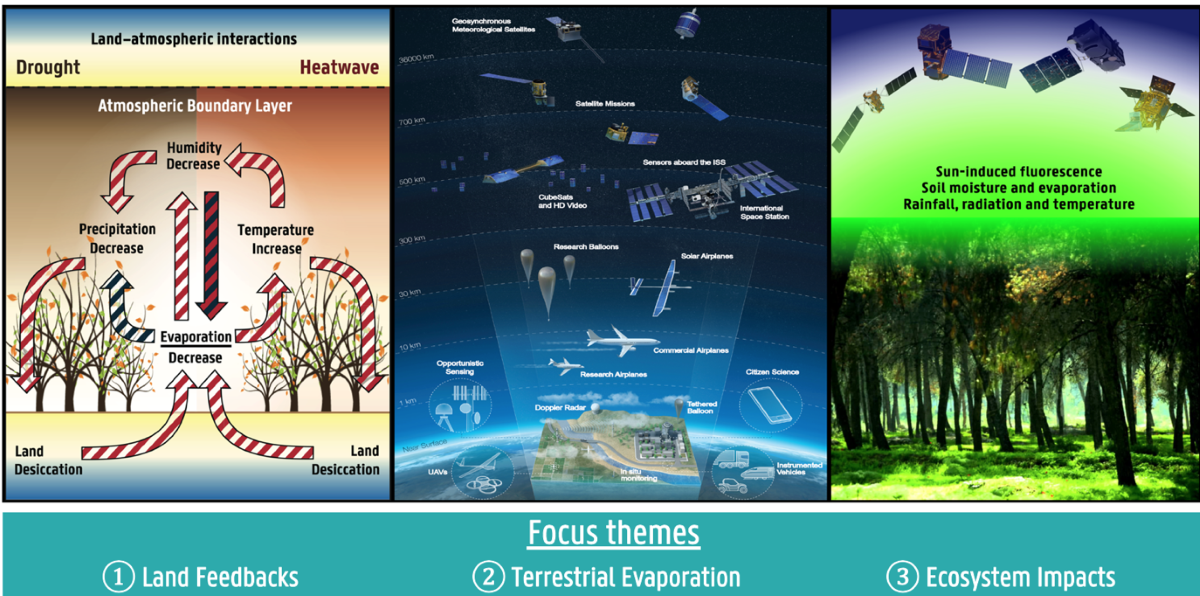H-CEL research teams
Hydrology and Climate team
Vision
Climate change and population growth are great threats that join together in their impacts on hydrology and ecosystems. This crossroad has led to the rise of a new hydrological discipline, lying at the interface between conventional hydrology, ecology and climate science. This discipline, sometimes referred to as 'climate hydrology', conceives hydrological systems as part of the Earth's global system, being impacted by anthropogenic emissions and land use change, but also regulating a number of land–atmosphere feedbacks that influence trends in climate and the occurrence of hydro-meteorological extremes.
The work of the Hydrology and Climate team focuses on the study of climate hydrology, trying to understand how the hydrosphere, biosphere and climate interact, the extent to which these interactions reflect ongoing Earth's system changes, and the implications for current and future societies.
Lines of research
- Land feedbacks | Satellite and in situ observations – in combination with heat and water transfer models, and regional climate models – are applied to investigate land–atmosphere feedbacks. The primary goal is to unravel the effect of land (e.g. vegetation, soil moisture) on the circulation of heat and moisture in the atmosphere, and ultimately on temperature, precipitation and radiation. The central focus is on hydro-meteorological extremes, such as droughts and heatwaves, their impact on societies, their prediction and the potential of land cover change and management as climate mitigation strategy.
- Terrestrial evaporation | Satellite observations are employed to monitor the long-term variability of the hydrosphere, atmosphere and biosphere. Examples of this line of research include the co-development of precipitation and soil moisture datasets, and particularly of terrestrial evaporation (GLEAM). There is also a commitment to provide high-resolution operational evaporation and soil moisture data. The team leads the annual section on land evaporation in the State of the Climate report (BAMS), and represents the land evaporation ECV in GCOS.
- Ecosystem Impacts | A central focus of our group is the understanding of the hydro-climatic factors that determine the state of ecosystems. The emphasis concentrates on the impact of hydro-climatic extremes and long-term climate change on vegetation. To this end, process-based models, as well as mathematical tools – like machine-learning and causal inference methods – are applied to study ecosystem resistance and resilience.
Members
Hydrology and Water Management team
Vision
It is a truism to state that water is a vital element of the earth and its environment, supporting (human) life, yet also posing risks such as flooding and droughts. Many of society’s largest challenges are nowadays caused by extremes in the global hydrological cycle, i.e. extreme rainfall and droughts. These extremes are expected to become even more exceptional due to anthropogenic climate change, posing further increasing risks to our society. The impact on the environment and the cities we live in can be immense. However, preparedness can help us in the management and mitigation of these problems.
Our research team mainly focuses on assessing hydrologic extremes and their consequences with special attention for floods and soil moisture. These can be assessed with multiple tools, both technological, i.e. remote sensing, and computational, i.e. modelling and data assimilation. We aim to apply these tools in different types of watersheds, ranging from natural river systems to urban areas, where sustainable water management is becoming one of the most important challenges of the 21st century.
Lines of research
- Stochastic modelling for climate impact predictions
- Microwave-based soil moisture retrieval
- SAR-based flood monitoring
- Data assimilation of remotely sensed observations for improved hydrological predictions
